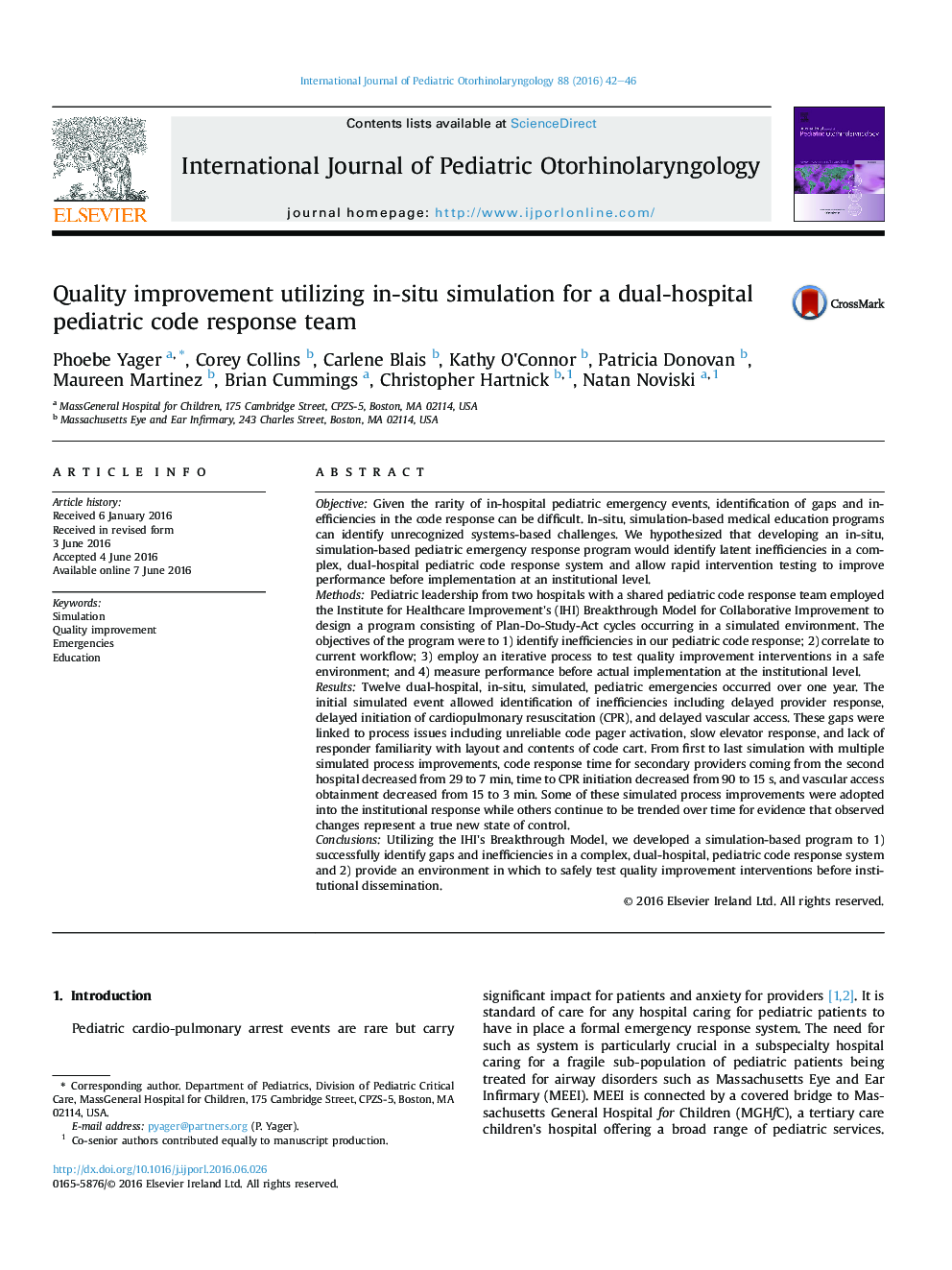| کد مقاله | کد نشریه | سال انتشار | مقاله انگلیسی | نسخه تمام متن |
|---|---|---|---|---|
| 4111388 | 1605980 | 2016 | 5 صفحه PDF | دانلود رایگان |
ObjectiveGiven the rarity of in-hospital pediatric emergency events, identification of gaps and inefficiencies in the code response can be difficult. In-situ, simulation-based medical education programs can identify unrecognized systems-based challenges. We hypothesized that developing an in-situ, simulation-based pediatric emergency response program would identify latent inefficiencies in a complex, dual-hospital pediatric code response system and allow rapid intervention testing to improve performance before implementation at an institutional level.MethodsPediatric leadership from two hospitals with a shared pediatric code response team employed the Institute for Healthcare Improvement's (IHI) Breakthrough Model for Collaborative Improvement to design a program consisting of Plan-Do-Study-Act cycles occurring in a simulated environment. The objectives of the program were to 1) identify inefficiencies in our pediatric code response; 2) correlate to current workflow; 3) employ an iterative process to test quality improvement interventions in a safe environment; and 4) measure performance before actual implementation at the institutional level.ResultsTwelve dual-hospital, in-situ, simulated, pediatric emergencies occurred over one year. The initial simulated event allowed identification of inefficiencies including delayed provider response, delayed initiation of cardiopulmonary resuscitation (CPR), and delayed vascular access. These gaps were linked to process issues including unreliable code pager activation, slow elevator response, and lack of responder familiarity with layout and contents of code cart. From first to last simulation with multiple simulated process improvements, code response time for secondary providers coming from the second hospital decreased from 29 to 7 min, time to CPR initiation decreased from 90 to 15 s, and vascular access obtainment decreased from 15 to 3 min. Some of these simulated process improvements were adopted into the institutional response while others continue to be trended over time for evidence that observed changes represent a true new state of control.ConclusionsUtilizing the IHI's Breakthrough Model, we developed a simulation-based program to 1) successfully identify gaps and inefficiencies in a complex, dual-hospital, pediatric code response system and 2) provide an environment in which to safely test quality improvement interventions before institutional dissemination.
Journal: International Journal of Pediatric Otorhinolaryngology - Volume 88, September 2016, Pages 42–46
